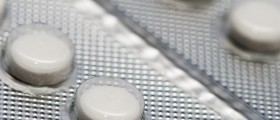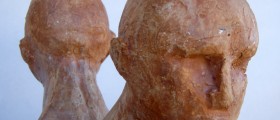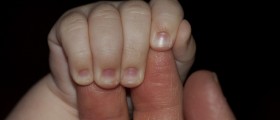
Gynecomastia is rather embarrassing swelling and enlargement of breast tissue in boys and men which, in majority of cases, results from imbalance of two hormones, estrogen and testosterone. In the affected men both breasts get enlarged, equally or unevenly. This enlargement may affect men of different age, starting with newborns and ending with elderly individuals.
Gynecomastia is not considered a serious problem. However, it has a huge impact on a man's self-esteem, particularly in adolescents. This may be a major aesthetic problem and a source of great embarrassment. Fortunately, this medical problem may withdraw on its own, and if the breasts do not return to normal, patients can be successfully treated.Gynecomastia and Natural Hormone Changes
Gynecomastia develops as a consequence of imbalance of testosterone (a typical male hormone) and estrogen (a typical female hormone). The decline in the amount of testosterone and accompanying increase of estrogen is a major trigger for breast enlargement.
These hormones play a crucial role in the development as well as maintenance of sex characteristics in both genders. While testosterone is the main male hormone, estrogen is, together with progesterone, essential for all women. The hormone in charge with breast enlargement is solely estrogen. Even though it is predominantly a female hormone, estrogen is also present in the blood of men, but in small amounts. Once the adequate ration of estrogen and testosterone is jeopardized, gynecomastia develops.
In infants gynecomastia affects approximately half of baby boys. Breast enlargement is associated with transfer of the mother's estrogen into the baby's blood. Breast tissue swelling generally goes away within 2-3 weeks.
Gynecomastia during puberty is a common consequence of hormonal imbalance boys undergo within this period of their lives. Enlarged breasts tend to spontaneously return to normal between 6 months and 2 years.
And finally, in older men the problem is most intensive between the age of 50 and 80.Medications and Gynecomastia
There is a number of medications able to induce imbalance of the previously mentioned hormones. Some of them include antiandrogens (drugs used for prostate enlargement and prostate cancer), anabolic steroids and androgens, AIDS medications, anti-anxiety drugs (e.g. diazepam), tricyclic antidepressants, some antibiotics, cimetidine (a peptic ulcer medication), digoxin (a heart medication) etc.
Medical Conditions and Gynecomastia
Hormonal imbalance is also possible in individuals suffering from different medical conditions. Gynecomastia is, for example, a characteristic of hypogonadism, some tumors (testicular tumors, adrenal gland tumors, pituitary tumors etc.), hyperthyroidism, kidney failure, liver failure/cirrhosis, malnutrition and starvation. And finally, even the very process of aging may be responsible for gynecomastia in elderly individuals.

















Your thoughts on this
Loading...